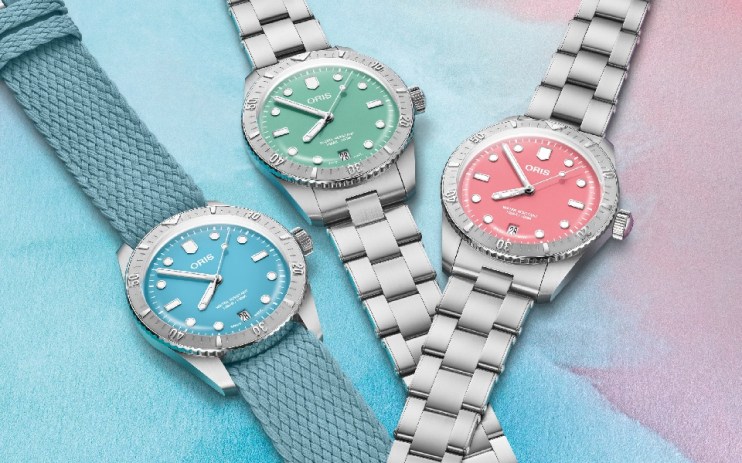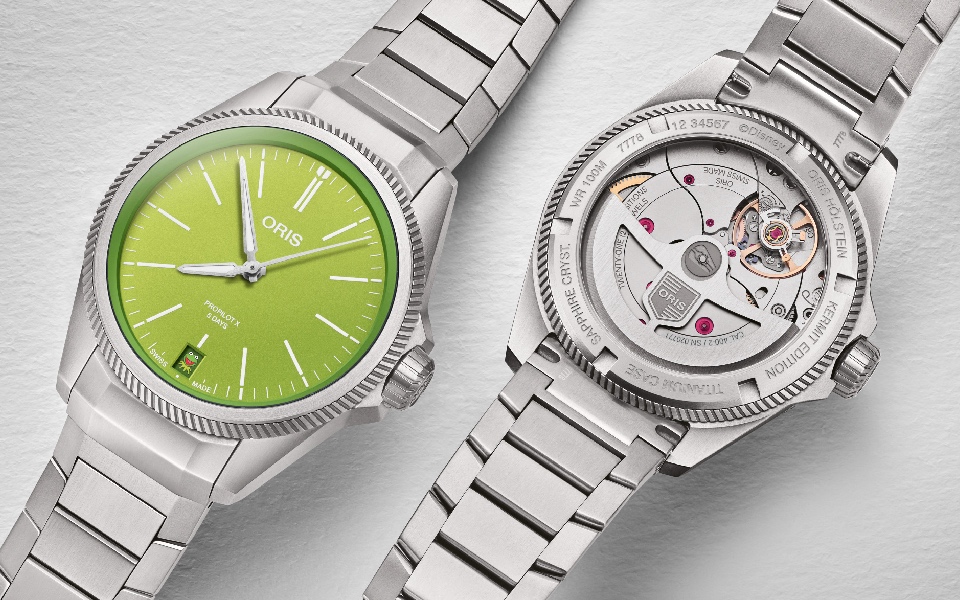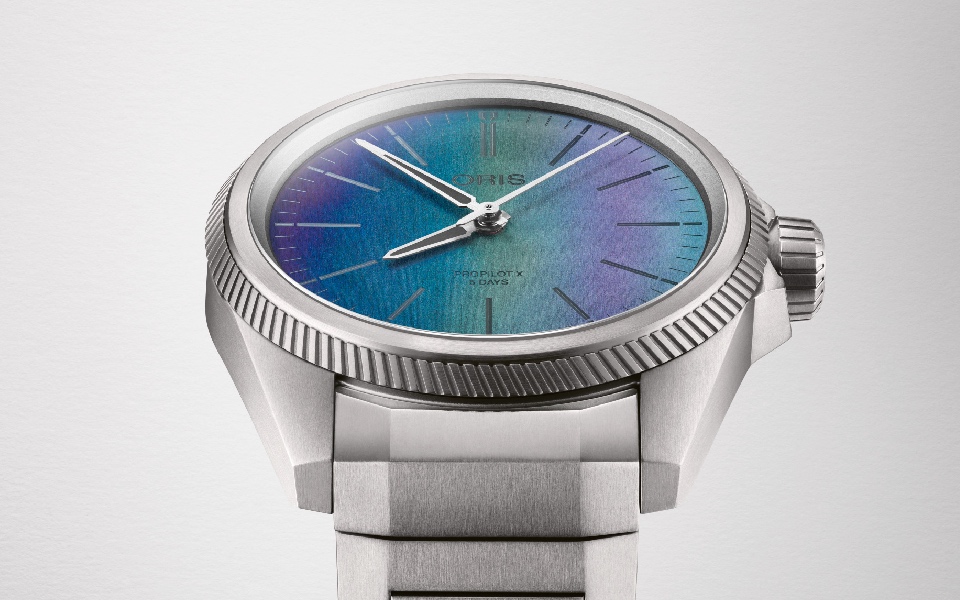How Oris became the coolest watch brand in Switzerland

It started with a diving watch, as so many watch-brand reinventions have done since Longines set the gold standard in 2007 with its ‘Legend Diver’. It took eight years, but in 2015 Oris launched its own sepia-tinted ‘Divers Sixty-Five’. A cool, quirky oddity with unusual 1960s cartoon-style title-card-font numerals allegedly inspired by a vintage design from, yes, 1965.
It didn’t set the horological world alight, but it reignited the conversation around Oris – a brand that had previously been known for watches dedicated to dead jazz musicians, democratic price tags, painting its winding rotors red, and little else.
Oris had pedigree all along, though. The Hölstein-based manufacturer, up in the Germanophone Jura mountains has been making watches since 1904. By the 1960s it was one of the ten largest watch manufacturers in Switzerland. Then came the influx of cheap quartz watches from Japan and, as with so many historic names, the now-notoriously named ‘Quartz Crisis’ almost shut it down. However, defiantly, Oris doubled down on its purely mechanical promise, launching a moonphase mechanical in 1984 in the middle of the Crisis while other Swiss brands were scrabbling to catch up with the era’s newfangled electronic tech’.
It was a tactic that succeeded, securing Oris clout… but not ‘cool’. The Divers Sixty-Five changed all that.

“Oris really turned a page when it brought out the Divers Sixty-Five – a chic, relatively sleek and small-sized retro-looking diving watch, which got everyone to notice the brand,” agrees Max De Turckheim, senior buyer for luxury watches and fine jewellery at Mr Porter, where Oris has long been stocked in the company of elite marques like IWC and Jaeger-LeCoultre. If the 2015 edition of this watch started the conversation, it was the following year’s version that really got people talking. The odd numerals were gone, replaced by confidently simple, SuperLuminova-filled circles and bevelled rectangles.
Watch design is a strange thing. You can easily tell when things aren’t right; when a date window is in the wrong place, when indices are too large or small or the wrong font, case dimensions are off… Every detail must work in harmony to create something universally desirable.
“Oris really lent itself to so many different aesthetics,” says De Turckheim, sure enough. “We loved it so much at Mr Porter we made our own special-edition Divers Sixty-Five in 2021 to celebrate our 10th anniversary!”
However, behind the scenes, something even more interesting was going on: Oris had started work on its own in-house movement. It took another five years but in 2021 Oris unveiled its Calibre 400. It’s not an exaggeration to say it was a gamechanger. Five days’ power reserve and a silicon escapement for a start, but no less than 10 years’ warranty was unprecedented, let alone a statement of intent. All while managing a wry nod to Oris’s mascot: viewed through the sapphire caseback, it looked like a teddy bear.

The launch of the Calibre 400 made Oris a double threat. Its watches now had enough flair for the fashion press, thanks to the hen’s-teeth Cotton Candy in pink blush and bronze, then this year’s ProPilot ‘Kermit’ – yes, as in Kermit the frog, instead of ‘1’ on the date – while ramping up its horological chops in parallel, keeping the watch crowd keener than ever.
An added bonus: if you want to irritate the climate deniers (always a positive) Oris’s environmental and sustainability policies are affecting real-world change. It is involved in projects to protect South Korea’s second longest river, the Hangang, which supplies water to 10m people; has supported the conservation of Lake Baikal in Russia, the world’s deepest freshwater lake with richest and most unusual underwater fauna on the planet; even its own factory is carbon-neutral, with aims to reduce its CO2 emissions 10% year-on-year.
In the last couple of years, it has increased its threat from double to triple as Oris has started experimenting with technologies never seen before in watchmaking. It has hired Richard Ipyana “Ipy” Siegrist who is specifically in the business of seeking materials not traditionally used in this industry. Its ProPilot Altimeter has a 3D-printed carbon composite case, thanks to its partnership with Zürich-based 9T Labs, a spin-off enterprise incubated by ETH, a public research university set up by the Swiss federal government to educate engineers and scientists. The same lab is behind the latest ProPilot X Laser, which has an iridescent dial whose beetle-wing colour was achieved by using a laser treatment to change the titanium in such a way it alters the spectrum of visible light that is reflected back to your eyes.
Bold, clever, Wonka-esque witty, and surprising. Which, ironically enough, is exactly what we’ve come to expect from Oris 2.0.